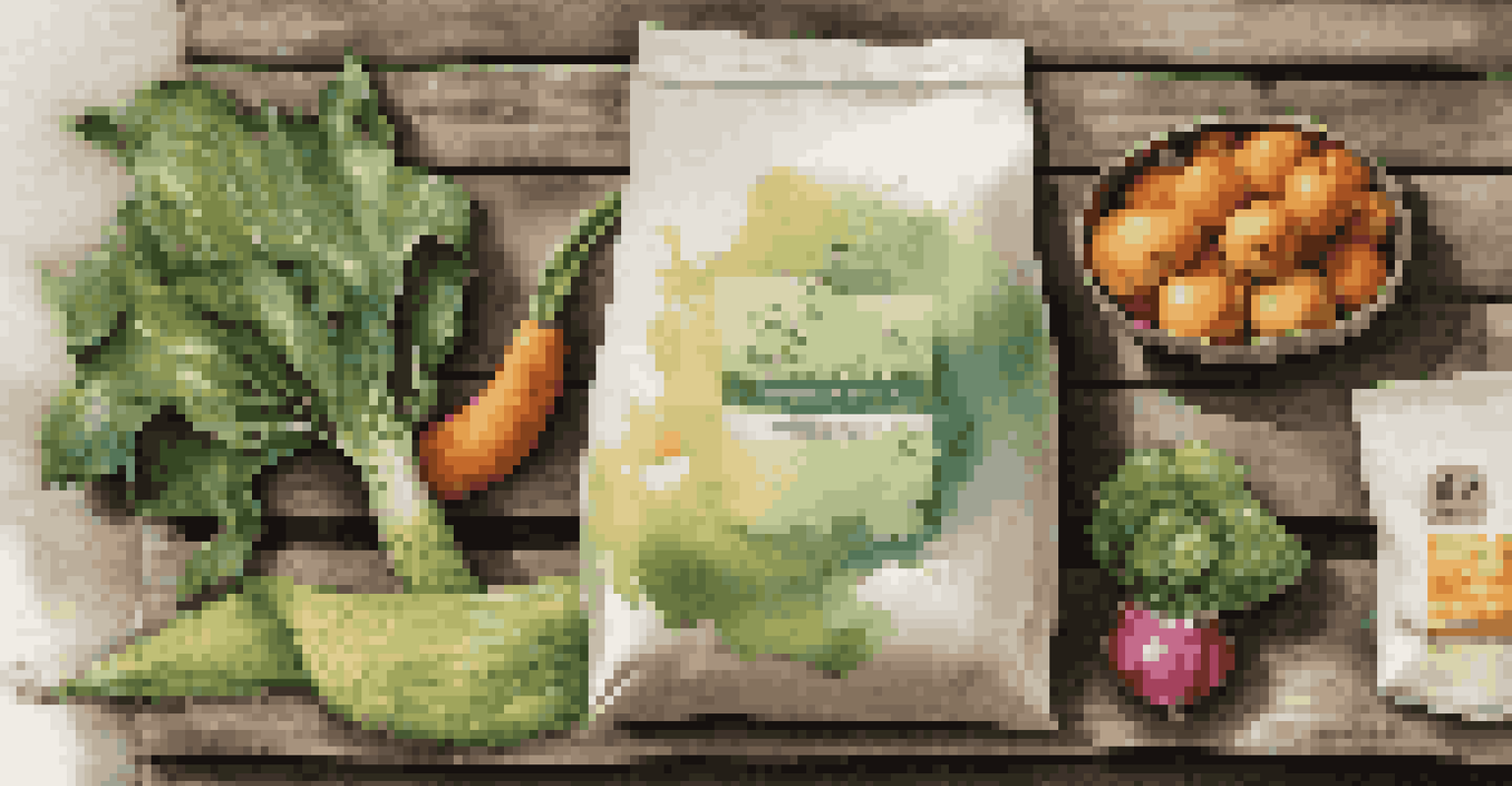Sustainable Materials: Innovations for Eco-Friendly Products

Understanding Sustainable Materials and Their Importance
Sustainable materials are resources that are produced, processed, and disposed of in ways that minimize environmental impact. Think of them as the eco-friendly superheroes of the material world, designed to reduce our carbon footprint. Their importance lies in their ability to help conserve natural resources and promote environmental health.
The greatest threat to our planet is the belief that someone else will save it.
For instance, bamboo is a fantastic sustainable material; it grows quickly and doesn't require pesticides, making it a great alternative to traditional wood. This not only preserves forests but also supports biodiversity. By choosing sustainable materials, we can make a significant impact on reducing waste and pollution.
Ultimately, the shift to sustainable materials is not just a trend—it's a necessity for a healthier planet. As consumers become more eco-conscious, brands are stepping up, creating products that align with these values. This creates a win-win situation for both the environment and the economy.
Innovations in Biodegradable Materials
Biodegradable materials are designed to break down naturally over time, reducing landfill waste and pollution. Products made from these materials, like compostable packaging, are revolutionizing the way we think about disposables. Imagine a world where your takeaway container can literally disappear into the soil after use—it's not just a dream anymore!

Innovations in this area include materials made from cornstarch, mushroom mycelium, and even seaweed. For example, seaweed-based packaging not only decomposes quickly but also has the potential to be edible! Such innovations challenge the traditional notions of packaging and promote a circular economy.
Sustainable Materials Protect Earth
Sustainable materials, like bamboo and natural fibers, help conserve resources and reduce environmental impact.
By embracing biodegradable materials, we pave the way for a cleaner, greener future. As consumers, we can support brands that prioritize these materials, pushing industries to adopt more sustainable practices. This shift in consumer behavior is crucial for driving change on a larger scale.
Recycled Materials: Giving New Life to Old Products
Recycled materials are crucial in reducing waste and conserving resources. By repurposing materials like plastic, glass, and metal, we can significantly lessen the burden on landfills and the environment. Think of recycling as a second chance for materials that would otherwise become trash.
We do not inherit the earth from our ancestors; we borrow it from our children.
Innovative companies are now creating products from recycled ocean plastic, turning pollution into valuable resources. This not only helps clean our oceans but also raises awareness about the plastic crisis. For instance, some brands use recycled plastics to create stylish and functional apparel, proving that sustainability can also be fashionable.
The use of recycled materials is a testament to creativity and resourcefulness in the face of environmental challenges. As consumers, choosing products made from recycled materials not only supports sustainability but also encourages more companies to adopt eco-friendly practices. Together, we can foster a culture of recycling and circularity.
Natural Fibers: The Eco-Friendly Textiles of the Future
Natural fibers like organic cotton, hemp, and linen are gaining popularity as sustainable alternatives to synthetic textiles. These materials are not only biodegradable but also often produced with less water and fewer chemicals. Imagine wearing clothes made from plants that don't harm the environment—this is the future of fashion!
For example, hemp requires little water and no pesticides, making it an incredibly sustainable crop. Additionally, its durability means clothing made from hemp can last much longer than those made from traditional fibers, reducing waste over time. Brands are now experimenting with blends of these natural fibers to create innovative, eco-friendly fabrics.
Biodegradable Innovations Transform Waste
Biodegradable materials, such as plant-based plastics and mycelium, are revolutionizing disposables by breaking down naturally and minimizing landfill waste.
The rise of natural fibers reflects a broader shift towards sustainable fashion, where consumers are increasingly aware of the environmental impact of their clothing choices. By opting for natural fibers, we can support an industry that respects both people and the planet. It’s a small change in our buying habits that can lead to significant environmental benefits.
The Role of Mycelium in Sustainable Product Design
Mycelium, the root structure of fungi, is emerging as a revolutionary sustainable material. This organic marvel can be cultivated into various forms, making it suitable for a wide range of applications—from packaging to furniture. Imagine packaging that’s not only protective but also compostable and made from mushrooms!
Companies are now harnessing mycelium to create biodegradable alternatives to plastic packaging. This innovative approach not only reduces plastic waste but also encourages sustainable farming practices. Plus, mycelium can grow rapidly, making it an efficient resource for product design.
The use of mycelium is an exciting example of how nature can inspire innovative solutions to environmental challenges. As we continue to explore this fascinating material, we open doors to a future where sustainability and creativity go hand in hand. By supporting products made from mycelium, we contribute to a more sustainable and circular economy.
Exploring Plant-Based Plastics: A Sustainable Alternative
Plant-based plastics, also known as bioplastics, are made from renewable resources like corn starch or sugarcane. Unlike traditional plastics derived from fossil fuels, these materials offer a more sustainable alternative that can help reduce our reliance on non-renewable resources. Imagine a world where plastics are not only biodegradable but also sourced from plants!
Brands are increasingly adopting plant-based plastics for packaging, utensils, and even clothing. For example, some companies are using bioplastics to create packaging that degrades more quickly than conventional plastic. This shift not only addresses plastic waste but also promotes a more sustainable approach to production.
Recycled Materials Foster Creativity
Recycling transforms old products into valuable resources, promoting sustainability and encouraging innovative solutions to environmental challenges.
As consumers, we can support this transition by choosing products made from plant-based plastics. By doing so, we encourage companies to invest in sustainable materials and technologies. Together, we can reduce the environmental impact of plastic and promote a healthier planet for future generations.
The Future of Sustainable Materials: Trends to Watch
The future of sustainable materials is bright, with numerous trends emerging that promise to reshape industries. From advancements in bioengineering to the circular economy, innovation is at the forefront of sustainability. Picture a future where waste is minimized, and every material has a purpose—this is becoming increasingly achievable.
One exciting trend is the rise of 3D printing with sustainable materials, allowing for precise manufacturing that reduces waste. Additionally, the integration of technology in monitoring sustainable practices is gaining traction, ensuring that materials are sourced responsibly. This blend of innovation and sustainability opens new avenues for eco-friendly products.

As we look ahead, the key will be collaboration among consumers, brands, and policymakers. By supporting sustainable practices and materials, we can drive the demand for eco-friendly products. This collective effort will shape a future where sustainability is the norm, not the exception.